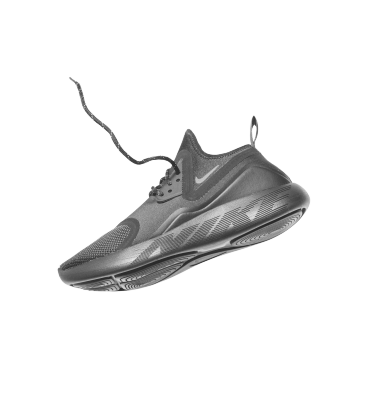Click to order
Total:
Running Technique

Running is a natural method of movement for humans. As soon as kids start walking, they start running. And our predecessors needed running to survive: hunting, escaping from hazards and migration all involve running. So if we are born to run, why do we run "wrong"?
THE ANSWER IS SIMPLE: MODERN LIFESTYLE CHANGES OUR MOVEMENT MECHANICS. IF YOU WATCH KIDS PLAY OUTSIDE YOU WILL SEE HOW EFFORTLESSLY THEY RUN. BUT THE OLDER WE GET, THE HARDER IT SEEMS TO RUN.

Try landing on your heels while running barefoot - and you will soon realise that it is almost impossible. Frankly, it hurts. But shoes lets us land on our heels without any pain. This triggers changes in running biomechanics and promotes active landing with your leg stretched forward in front of your body. In turn, this causes stress and creates load on knees, hips and spine. No wonder that these areas are most injury-prone.
Studies demonstrate that all runners go through three poses. That is all that is needed to propel your body forward. All other movements while running are useless and only waste energy and therefore should be excluded to make running less stressful and more efficient.


"Paradoxically the worst invention for runners are running shoes".

Feet and ankles are ideal natural dampers. Human feet have 52 bones, 66 joints and over 200 muscles, tendons mad ligaments. They can and should act as dampers to absorb impact energy at landing.
Proper running technique starts in your head: it is always harder to re-learn something that you already know how to do rather that learn from scratch . That is why it is very important to understand the theory behind natural running and why is the safest and most efficient running method.
THREE MAIN RUNNING PHASES ARE
Runner's pose (the heel of one foot is pulled up to the hip, the other leg's knee is slightly bent)
Fall
Pull heel to hip



What you should keep in mind:
Body's center of mass is located in the hips, back should be held straights - no bending forward: hips, feet and spine should be in one line, you should look straight ahead and not down.
Knees should stay bent and never get 'blocked'.



Pull your foot to your hip and land effortlessly: your foot should fall to the ground on its own, no active landing is needed. If you are doing it correctly, your feet will land exactly under your hips. Main muscles engaged are hip flexors.
DONE WITH THEORY
To get this feeling and start running correctly consult our coaches. They will explain running mechanics in detail, reveal "secrets" of technique, practice special exercises with you and go through video analysis of your running. Make your steps towards effortless and injury free running with us!

Running is a "controlled fall" or, in other words, flying.







